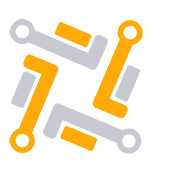SCORM, or Sharable Content Object Reference Model, is a set of technical standards that define how online learning content and learning management systems should interact with each other. SCORM compliance is an important factor when choosing a Learning Management System (LMS) because it ensures that the LMS is compatible with a wide range of e-learning content and can effectively track and report on student progress.
One of the main benefits of SCORM compliance is that it allows for the seamless integration of different types of e-learning content into the LMS. Without SCORM compliance, an LMS may not be able to properly recognize or track certain types of content, making it difficult for trainers and managers to accurately assess student progress and ensure that all necessary training has been completed.
Another benefit of SCORM compliance is that it allows for the transfer of student data between different LMSs and e-learning platforms. This can be especially useful in cases where an organization uses multiple LMSs or switches to a new LMS, as it allows for the seamless transition of student data without inputting or transferring information manually.
Not only do the advantages of SCORM compliance guarantee a smooth and consistent delivery of e-learning content on various devices and platforms, but it also prevents any blunders that may transpire due to variations in display or access. Without this formality, students can feel overwhelmed, perplexed, and discouraged navigating your course material.
A Brief History of SCORM
The development of SCORM began in the late 1990s as a response to the growing popularity of e-learning and the need for a standardized way to integrate different online learning content into LMSs. The first version of SCORM, SCORM 1.0, was released in 2001 and was primarily focused on the tracking and reporting of student progress. Subsequent versions of SCORM, including SCORM 1.1, SCORM 2004, and SCORM 4th Edition, have expanded on these capabilities and added support for additional features and functionality.
SCORM has become the de facto standard for e-learning interoperability and has been widely adopted by both LMS vendors and content developers. As a result, most modern LMSs are SCORM compliant, which allows for the seamless integration of a wide range of e-learning content into the LMS.
In recent years, SCORM has faced increasing competition from other e-learning interoperability standards, such as the Experience API (xAPI) and the Tin Can API. While these newer standards offer additional capabilities and functionality, SCORM remains the most widely used and recognized standard for e-learning interoperability.
The introduction of SCORM has revolutionized the e-learning sector, making it effortless for organizations to distribute and oversee online learning programs. As its use and evolution persist, we can expect that SCORM will continue to shape the future of e-learning and Learning Management Systems.
Conclusion
SCORM compliance is an important factor to consider when choosing a Learning Management System. By ensuring that the LMS is compatible with a wide range of e-learning content and can effectively track and report on student progress, SCORM compliance can help ensure an e-learning program’s success.


